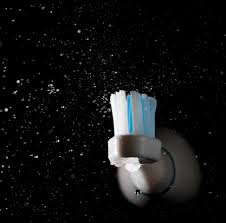But not for the reasons you may think—turns out the smaller, hollow-head electric toothbrushes can contain up to 3,000 times the bacterial growth of a solid-head toothbrush! That’s right—
3,000 times the bacteria! Yuck! Donna Warren Morris, R.D.H., .Ed., lead author and professor at The University of Texas Health Science Center at Houston School of Dentistry, found that the
bacterial counts in the two hollow-head toothbrush groups studied were higher than in the solid-head toothbrush group, in 9 out of 10 comparisons.
Ditch those hollow-heads and opt for the safer, more sanitary solid-head brushes. An abstract of this eye opening study is published in the
August issue of The Journal of Dental Hygiene.
Hollow-Head or Solid-Head Toothbrushes—What’s the Difference?
At this point, if you’re like most patients, you’re probably wondering how to tell the difference between a hollow-head and a solid-head toothbrush. According to Morris, it isn’t always obvious by the packaging, which is hollow and which is solid. “The best way to identify a solid-head design is through the connection to the body of the power toothbrush. Naturally, there will be some space to connect the two parts but a significant portion will be solid, up to the bristles or brush head,” advises Morris. Bristles should always be soft and made of nylon.
Health Risks of Oral Bacteria
The health risks of bacteria found in the mouth are well documented. Morris reiterates other studies which have shown bacteria around the heart that causes cardiovascular disease also causes gum disease.
Fusobacterium, which is another bacterium found in the hollow-head toothbrushes, is known to cause colorectal carcinoma. You can find more information about the
health risks associated with oral bacteria at the U.S. National Library of Medicine.
How Do I Keep My Toothbrush Bacteria Free?
- Rinse your toothbrush in hot water after every use.
- Deep cleaning with sanitizers is a great way to reduce or eliminate bacteria in your toothbrush. You can also soak it in antibacterial mouthwash. Some electric toothbrushes come with ultraviolet lights that kill microorganisms.
- Store your toothbrush upright so it can dry—the moisture is a hotbed for bacteria to grow. You can cover it but do so with a cover that allows air to circulate around the toothbrush.
- Replace your toothbrush regularly—every 3-4 months is a good rule of thumb or when the bristles become frayed and worn.
- Throw away your toothbrush after you’ve been sick—no exceptions.
- Never, ever share your toothbrush with anyone.
Bottom line—size does matter.
Call Sunrise Dental to schedule your next appointment. We have 3 locations throughout the Triangle:
Raleigh – 919-878-0055
Durham – 919-493-3355
Chapel Hill – 919-929-3996

